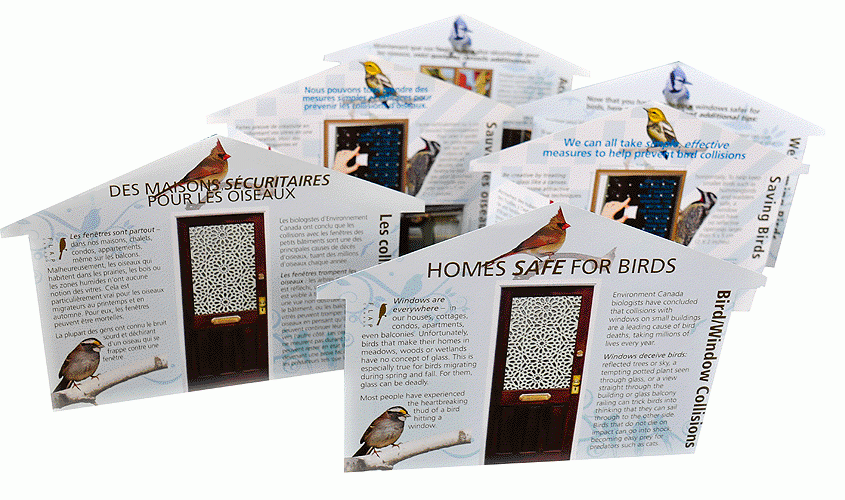Most people have experienced the heartbreaking thud of a bird hitting a window. Or maybe we’ve observed a territorial bird pecking at its reflection in glass or a mirror.
Why does this happen? Unfortunately, birds have no concept of glass. They may see their reflection and fight with the image they see. Or, reflected trees and sky, a tempting potted plant seen through glass, or a view straight through the building or glass balcony railing can trick birds into thinking that they can sail through to the other side. Birds that do not die on impact can go into shock, become easy prey for predators such as cats.
Canadian research¹ estimates 25 million birds fatally collide with windows at low, mid and high-rise buildings annually.
¹Quantifying Human-related Mortality of Birds in Canada, September 2013





